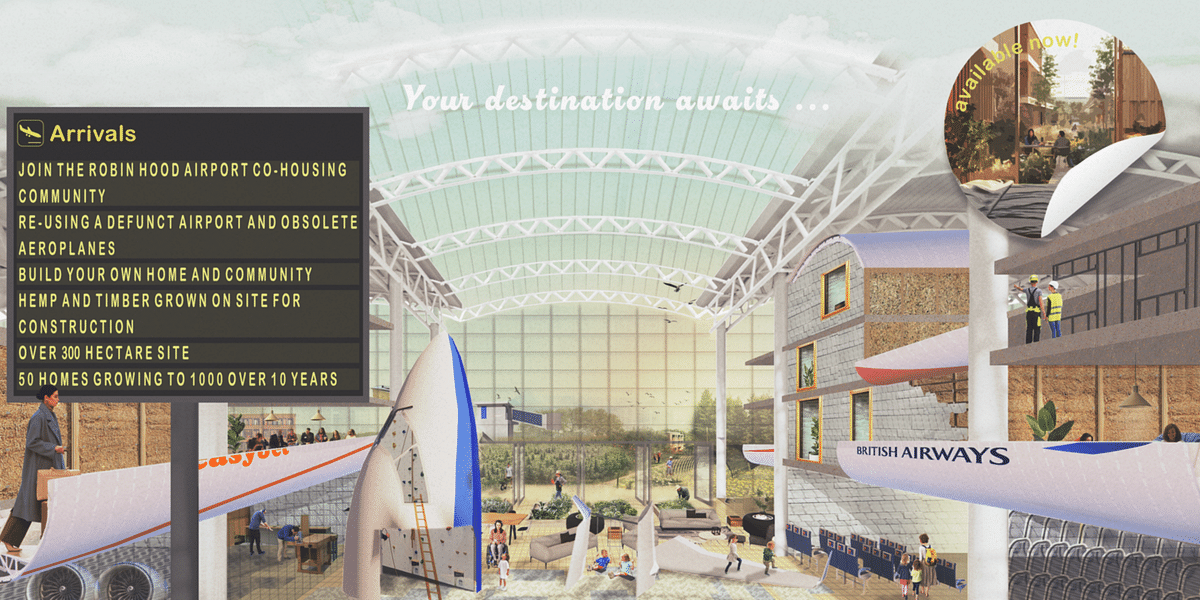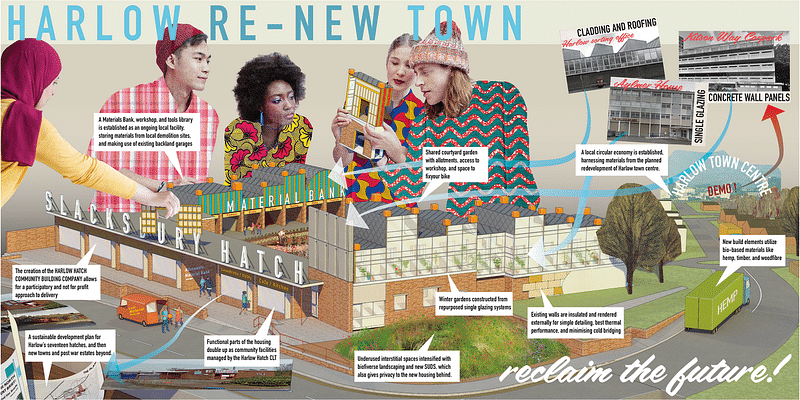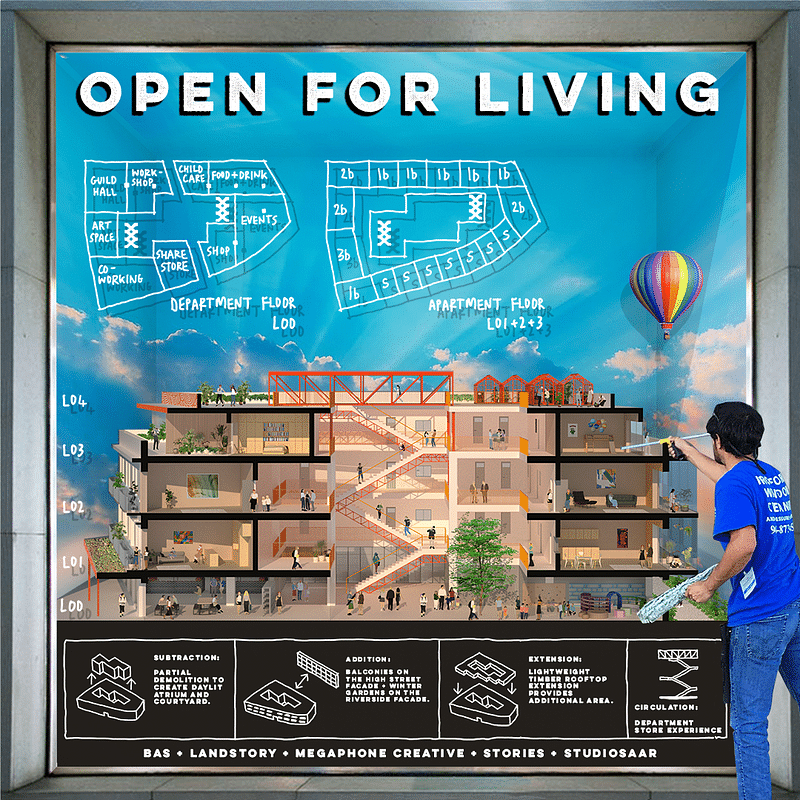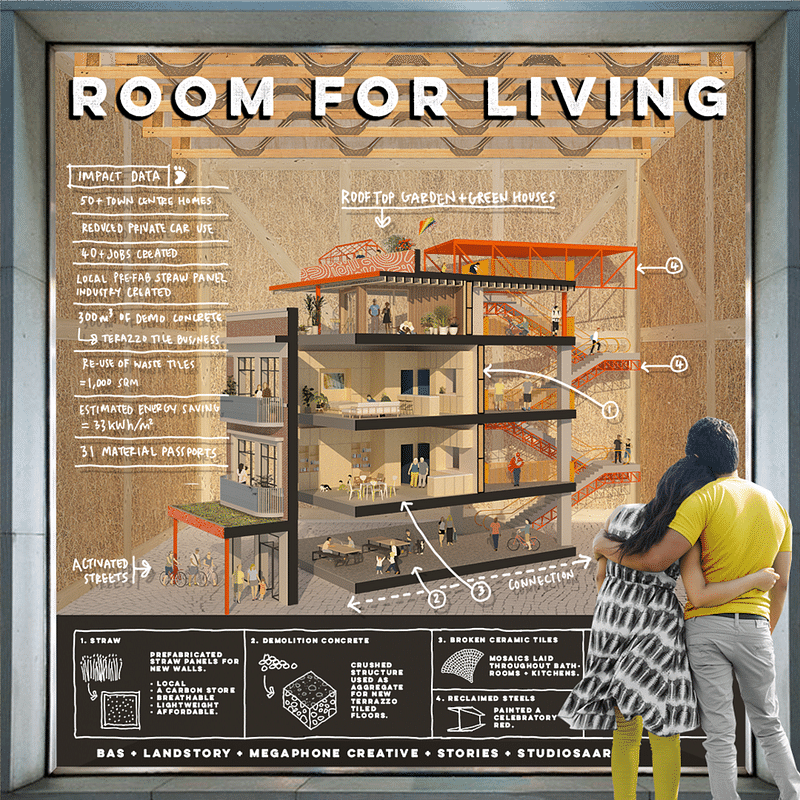These three shortlisted adaptive-reuse proposals will vie for the 2024 Davidson Prize
By Josh Niland|
Tuesday, Apr 30, 2024

Related
The shortlist finalists for the 2024 Davidson Prize have been announced as part of the annual contest’s third edition, whose theme is 'Rethinking Home — Adapt and Reuse.'
The field that was selected from the proposals included in this month’s longlist announcement were each asked to develop ideas for new homes made from recycled materials or using retrofitting methods on existing structures. Each finalist will receive honorariums worth a total of £5,000 ($8,160 USD) each to develop their proposals further toward the £10,000 ($12,500) final prize.
Alexander Turner, Co-founder of Studio MUTT and winner of the 2023 Prize, said: "After being part of the 2023 winning team, it was great to be on the other side of the table. For me, it was important that the three finalists we selected were grounded in a level of reality, so they have potential to be seeds of growth after the competition. While the three finalists are diverse in their overall approaches and team configurations, they are centered around the idea of community, something which I believe is vital to the home of tomorrow."
The 2024 contest is aimed at designing solutions to help address the UK's housing shortage within the context of climate change and follows previous editions, which combatted other contemporary social issues like homelessness and isolation. A winner will be announced in May.
The three projects in the running for this year's Davidson Prize are:
Robin Hood Co-Living Community by Alma-nac, Constant SD, Eric Guibert, Mark Blackwell


Description: "Demonstrating how redundant airports could be reimagined over time as new communities, the project focuses on a 300ha ex-airport in Sheffield. It explores how redundant structures and decommissioned planes could be repurposed to create a first phase of co-living spaces, seeding larger self-build communities across airport grounds. As well as recycling existing terminal buildings and high-grade aeroplane parts to provide or facilitate housing, the project proposes on-site growing of building materials and the re-wilding of runways."
Harlow Re-New Town by OEB Architects / Yaa Projects / Nick Bano / Dominic Humphrey / Stuti Bansal


Description: "A vision to renew the New Towns of the 1950s and 1960s with a different kind of home community aimed at the needs of diverse young populations. Using the 17 ‘hatches’ of Harlow New Town as a case study, the model focuses on local circular economies, self-build skills, materials mining and bio-materials. It proposes a way for new towns and post-war estates to actively remake themselves by developing publicly owned brownfield sites for housing via Community Land Trusts and Community Building Companies."
Apartment Store by Studio Saar, Landstory, Stories, BAS, Megaphone Creative


Description: "This concept applies a defibrillator to the heart of the UK’s towns by reinventing vacant retail space as homes and a buzzing circular economy hub. Providing people with real-world examples of the ideal homes of the future — including how demolition materials can be repurposed and how locally grown bio-materials can create new business ventures — the proposal harnesses the civic pride of an ex-department store in Taunton while helping to halt development sprawl."
RELATED COMPETITION The Davidson Prize 2024

RELATED NEWS The 2024 Davidson Prize longlist explores the theme ‘Rethinking Home — Adapt and Reuse’


Share
0 Comments
Comment as :